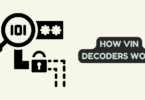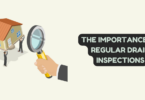
Farmers
Farm animal equipment has seen significant advancements in recent years, transforming the way farmers handle and manage their livestock. Modern innovations have not only improved efficiency but also enhanced animal welfare and reduced stress for both farmers and animals. In this article, we will explore some of these innovations in livestock handling and management systems and how they are revolutionizing the agricultural industry.
Innovations in Livestock Handling and Management
Automated sorting systems utilize RFID and computer vision technology to identify and categorize animals by attributes such as weight, age, or health, reducing manual labor and increasing accuracy in animal care. Remote monitoring systems enable farmers to observe their livestock from afar through sensors and cameras, providing real-time data for informed decision-making. Electronic identification (EID) streamlines record-keeping by tagging animals with unique IDs via ear tags or implants, enhancing traceability throughout their lives. GPS integration in livestock management enables tracking of location and movement patterns for optimized grazing and theft prevention. Automated feeding systems lower labor needs and increase feed efficiency by dispensing precise quantities based on individual needs. Ergonomic handling equipment focuses on animal welfare and human safety through the use of hydraulic chutes, squeeze gates, and adjustable alleys, reducing stress on animals and injury risk for workers. Environmental monitoring in livestock housing facilities tracks temperature, humidity, and air quality to maintain optimal conditions for animal comfort, growth, and disease prevention.
Cattle Gates
A cattle gate is a crucial component of modern livestock handling systems. These gates are designed to control the movement of cattle within a farm or between different areas of a facility. They come in various types, each serving specific purposes. For example, swing gates are commonly used for sorting and directing cattle, allowing farmers to separate animals for different purposes, such as vaccination or loading onto trucks. Sliding gates are another popular choice for controlling access to pens and alleyways. Cattle gates are often designed with safety features, such as anti-jump bars, to prevent cattle from escaping or injuring themselves during handling. Additionally, some cattle gates are now equipped with electronic sensors and remote control mechanisms, making it easier for farmers to manage their cattle efficiently and minimize stress on the animals.
The Benefits of Modern Livestock Handling and Management Systems
The integration of modern livestock handling and management methods presents numerous advantages for both farmers and animals. By employing automation and technology-driven systems, efficiency is improved, significantly decreasing manual labor requirements and enhancing time and cost savings. The welfare of the animals is prioritized as stress and discomfort are minimized during handling processes, leading to healthier and happier livestock. Data-driven decision-making is facilitated by remote monitoring and data gathering, enabling farmers to optimize feeding, breeding, and healthcare practices. Operating expenses are reduced due to automated feeding and environmental control systems, which minimize waste and energy consumption. Improved traceability is ensured through electronic identification and tracking systems, crucial for quality assurance, disease control, and meeting regulatory guidelines. In addition, ergonomic handling equipment design and safety features diminish the risk of accidents, safeguarding both animals and farm workers.
Modern innovations in livestock handling and management systems have transformed the agricultural industry. These advancements not only improve efficiency but also prioritize animal welfare, reduce operating costs, and enable data-driven decision-making. As technology continues to evolve, we can expect even more sophisticated solutions to further enhance the way farmers care for and manage their livestock. The inclusion of cattle gates, with their safety and control features, underscores the importance of well-designed equipment in modern agriculture. Embracing these innovations can lead to more sustainable and profitable livestock farming practices.





